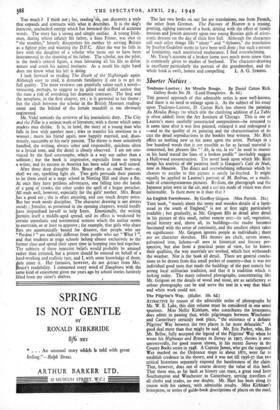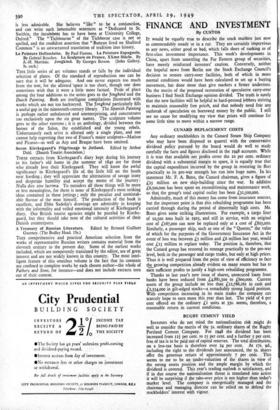The Pilgrim's Way. (Muller. 10s. 6d.)
ATTRACTIVE by reason of the admirable series of photographs by Mr. W. E. Lake, this slim volume must be considered in one sense spurious. Miss Nellie Kirkham, who contributes the letterpress, does admit in passing that, while pilgrimages between Winchester and Canterbury certainly took place, " the existence of a definite Pilgrims' Way between the two places is far more debatable." A good deal more than that might be said. Mr. Eric Parker, who, like Mr. Belloc, fully accepted the legend of the Pilgrims' Way when he wrote his ilighways and Byways in Surrey in 19o7, throws it over unreservedly, for good reason shown, in his recent Surrey in the County Books series in 1948. A Captain James, who got the supposed Way marked on the Ordnance maps in about 1871, went far to establish credence in the theory, and it was not till 1936-37 that two critical historians separately exposed the baselessness of the claim. That, however, does not of course destroy the value of this book. That there was, as far back as history can trace, a great road from Southampton and Winchester to Canterbury, serving travellers of all cloths and trades, no one doubts. Mr. Hart has been along its course with his camera, with admirable results. Miss Kirkham's I letterpress, or series of guide-book descriptions of places on the road,
is less admirable. She believes "like" to be a conjunction, and can write such lamentable sentences as " Dedicated to St. Swithin, the incumbent has to have been at University College, Oxford." The "Tichbourne " of the Tichborne case is not so spelled, and the confident assertion that " Bunyan lived on Shalford Common " is an unwarranted translation of tradition into history.



































 Previous page
Previous page